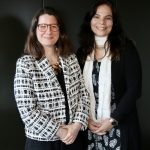Biting the bullet
Political Economist Richard H.K. Vietor, Baker Foundation Professor of Business Administration at the Harvard Business School visited Lisbon in May as a speaker at the conference ‘Portugal: Where to now?’ at the Gulbenkian Foundation. He also addressed members of the American Club of Lisbon and the American Chamber of Commerce in Portugal. In the first of a two-part article Essential Business examines his take on Portugal’s economic crisis and the troika intervention. In Part II the economist looks at what Portugal still needs to do.
Richard Vietor is full of admiration and praise when he talks of how Portugal faced its greatest economic crisis since the early 1980s head on and, in many cases, went above and beyond what was demanded in terms of structural, fiscal and financial reforms by the IMF-led troika which effectively took over the country’s financial governance from 2011.
Vietor says that Portugal “bit the bullet” and did better than Spain, Ireland and Greece in tackling its mounting debts head on, in a move that shed the spotlight on a small southern European country which by 2017 became, thanks to tourism, investment and media attention, one of the most popular countries in Europe. But what led to the crisis and how did Portugal dig itself out of bankruptcy?
High labour costs – Low productivity
Richard Vietor says several factors caused the crisis in Portugal, but the trigger was joining monetary union with a long period with no difference between Portugal’s bond spread and that of Germany.
In 2001, China joined the WTO resulting in Europe’s tariffs going down for China and Portugal having to directly compete, in a number of sectors in which it did business, with China.
By 2004, 10 Eastern European countries joined the EU, so Portugal now had to compete with Poland, the Czech Republic among others. This tough competition was the backdrop and framework for Portugal’s later problems.
Portugal’s productivity was low compared to Belgium and Holland and some Eastern European countries. This not to mention unit labour costs (wage growth minus productivity growth) which continued to rise.
“If you have continued wage growth — and Portugal still does — and don’t have much productivity growth (and Portugal still doesn’t), that leads to rising labour costs which makes the country uncompetitive,” he explained.
Lack of savings
Richard Vietor says the Portuguese have “the American disease.” By that he means the Portuguese like to consume, but they don’t like to save. Whether this is because average wages are generally so low in Portugal and taxes are so high that people don’t have spare cash to save; or whether it is because bank interest rates on savings are so low they don’t feel it is worth it, the university professor didn’t say.
What he did say was that in April this year household savings were just 4% compared to 6% in the US which is generally considered very low.
“The US citizens are the worst savers on planet earth” he said, “but you outdo us! If you don’t save but invest, the money has to come from somewhere and that money came from borrowing overseas on the international money markets” he said.
Borrowing allowed Portugal to invest and service its debts during the housing boom until 2011, while the balance of payments (trade) deficit which had generally stood at around US$10Bn in 1995 – and is still US$10Bn today — soared during the crisis.
“From 1995 until the crisis, as Portugal bought more Chinese and East European products and sold less domestic-made goods and exported less, the deficit got sharply worse, reaching US$35Bn. A huge deficit for a very small country,” Vietor said.
This led to a significant current account deficit of US$32Bn which meant that Portugal was borrowing heavily – US$32Bn in one of the worst years and between US$23Bn and US$25bn in other years.
“Even when your interest rates were low, the negative primary income (the interest being paid on the debt) rose sharply. The negative primary income combined with the negative trade resulted in a huge negative current account” he continued.
At the same time, Foreign Direct Investment slowed as investors began to get worried about the borrowing portfolio capital (bank loans) and the government borrowing needed to service its debts.
Portugal’s foreign exchange reserves fell to €10Bn which is “not very much money for a country”. Today they stand at US$25Bn which is “much healthier, but still not enough”.
“Most economists agree that you need three times those exchange reserves, or three quarters in reserves against your imports. Reserves need to keep rising” he advised.
Portugal’s budget — out of control
Portugal’s government budget was under control until the crisis hit home from 2008 with a deficit of only 3% of GDP. Then spending rose, while tax revenues collapsed, with revenues falling from US$43Bn to US$41Bn while expenditure rose from 45% to 51% of GDP with the deficit rising to 10% of GDP. The Government borrowed a lot to finance the shortfall.
Today, revenues are up at 43% with expenditure at 44% while the deficit is around 0.8% of GDP – a big improvement with forecasts for 0.2% of GDP according to Finance Minister Mario Centeno.
“People were asleep up until October 2009, there was just borrowing and borrowing and more borrowing with the attitude that the European Central Bank would take care of things” he said.
So euro bonds were issued, but they were actually Portuguese, Italian or Greek bonds and when investors figured that out after the collapse of Lehman Brothers, Greece went down the drain and they looked around to see who else was in trouble, examining Spain, Italy, Ireland, Cyprus and Portugal and the sovereign debt crisis emerged.
The Troika and austerity
Portugal ran out of money in May 2011 and Portugal got a €78Bn bailout and the Troika (IMF-EC-ECB) established 494 structural adjustments across all segments and markets of the economy setting targets for sweeping institutional and fiscal reforms.
“It really was an incredible list in a 130-page document with a small task group set up to enforce it. I was lucky to be able to interview the EU Commissioner Carlos Moedas who was head of the task group. He told me that by the end they had got half of the things on the list done and the OECD agrees there is a lot more still to do,” Richard Vietor said.
“Every week he would see different cabinet ministers to check they were keeping to targets and come down on them like a ton of bricks if they weren’t. Moedas did that for two years!”
Vietor admitted it was the toughest fiscal adjustment he had ever seen, Greece wouldn’t do it, the Portuguese did which was “really amazing” .
“Portugal bit the bullet and did the structural adjustment with a revenue increase was 3.4% of GDP and an expenditure reduction that was an incredible 7% of GDP.
“That was unbelievable. I had worked on the Turkey bailout in 2003 and they had to meet the conditions every three months or they would default on their debt. But that was noting like 10%. It was 4.5% that they had to cut” he added.
Income tax and VAT had to be raised, excise and property taxes were hiked, while on the expenditure side there were widespread cuts. Portugal maintained that until 2013 and only relaxed austerity under the Socialist PS government of António Costa.
Today, Portugal has all but paid back the loans it had borrowed from the IMF and ratings agencies have raised its credit status from ‘junk’ (non-investment grade) to BBB with a stable outlook. But “productivity still remains the problem” says Vietor.
Text: Chris GraemeVietor1024x683v










